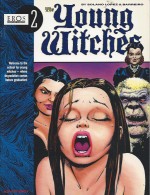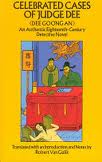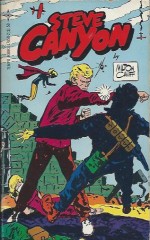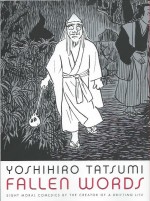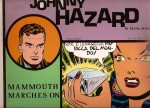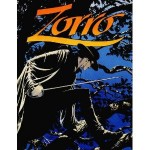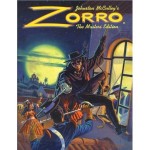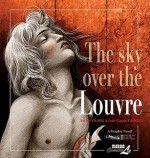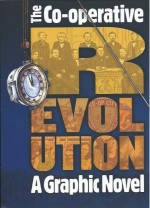
By Polyp, with Paul Monaghan, Rachel Vorburg-Rugh, Gillian Lonergan, Ed May and Ian Nixon (New Internationalist on behalf of the Co-operative Group)
ISBN: 978-1-906523-19-0
You might not be aware of it but 2012 is the United Nations International Year of Co-operatives – which I’ll define here as people working in community rather than competition, and applying that fundamental principle to the world of business.
Today Co-operative societies and groups have spread to every corner of the globe and proved a successful and frequently innovation-friendly alternative model to straight consume-expand-or-die Capitalism in commercial arenas as varied as wholesale and retail, agriculture, journalism, banking, car-making, textiles, construction, hotel management, all sorts of service industries and even Healthcare provision.
The potential of the simple notion of working together for mutual benefit seems to terrify some people – let’s call them greedy and selfish – but since the successful experiment of the Rochdale Pioneers in 1844 the philosophy has grown and blossomed and provided decent livelihoods for generations of workers and enabled them to provide increasingly better lives for their children.
Co-operation isn’t a tactic or model but rather a philosophy that encourages people to take full responsibility and reward for the fruits of their labours, which necessarily makes all their endeavours operate on a human scale and with a face anonymous corporate production finds impossible to match or emulate. The modern, thriving international movement grew from an impassioned but measured response to the worst excesses of the Commercial Age and is deftly recounted in the first section of this compelling and informative graphic history.
During the early years of the Industrial Revolution it was standard practice for the owners of British factories and industrial works to pay appalling wages to their workforces and simultaneously run the only shops where those meagre remunerations could be spent. Usually the bosses also owned the houses where workers lived: another method of ensuring the monies they paid out coming back into their own coffers.
As you’d expect such a closed system was easily prone to abuse: sales to the labourers – food, candles, clothes and every other household need – were rife with shoddy, cheap workmanship, with debased and adulterated food frequently sold in short measures and priced in such a way as to keep workers alive but with no hope of improving themselves or escaping the system. Credit was always extended – with no real intention of ever collecting on it – and workers were trapped forever in an inescapable spiral of debt to the company. It was pure economic feudalism and little better than slavery.
Many times before, workers had attempted to address the problem by uniting to buy goods in bulk and distribute them communally, but always the enterprises had failed. However on December 21st 1844 in Rochdale, a small band of working men – weavers, colliers, woolsorters and cloggers – pooled their small cash reserves and opened a rough-and-ready general store selling flour, sugar, butter and candles, promising “unadulterated wares in honest weights and measuresâ€.
Instead of mutually ruinous credit, The Rochdale Society of Equitable Pioneers offered all members of their collective enterprise a dividend – a fair and regular redistribution of profit after working costs were covered.
As the chapter ‘Yesterday’ details, despite fierce and unscrupulous opposition from established businessmen and authorities terrified of revolution by the lower class, the Co-operative movement endured and grew. When farmers and companies were squeezed to stop them providing produce to the Pioneers, the Society simply went further afield and even began sourcing or making their own items – a process and solution repeated over and again through nearly 170 years of continued existence and growth.
The burgeoning movement was a constant force for social mobility and improvement: in their first rented premises in Toad Lane, the upper floor swiftly became meeting rooms and a free Library, with not just books but microscopes, globes and all modern scientific instruments where the poor could educate themselves to eventually escape the trap of ignorance and poverty the wealthy created for them…
The slow but solid growth and geographical expansion of the radical movement is charted against the changing social and cultural climate in a beguiling and elegiac potted history after which ‘Today’ recounts many examples of successful Co-operative practice currently improving lives better all over the world.
One of the movement’s greatest successes was the establishment of Fair-Trade farms, plantations and other businesses around the globe, from Canada where more than a third of the World’s Maple Sugar is produced by Co-ops, to the USA where 900 rural Co-ops produce 42% of the nation’s electricity distribution, covering 75% of the landmass.
In India – where 239 million people belong to a Co-operative society – a tribe of hereditary snake-catchers even transformed their unique, traditional but dying trade into a thriving repurposed business.
Closer to home, when I first started freelancing as an artist/graphic designer, I belonged to a loose association of specialists who shared or traded jobs according to our specialities and particular strengths…
Almost as soon as they were published, Darwin’s discoveries regarding the fundamental evolutionary principle described as “Survival of the Fittest†were co-opted by Capitalists, hungry to justify their appalling excesses. Here ‘Always’ focuses on the plenitude of scientific discoveries which counter those spurious commercial notions and act as a happy rebuttal to the spurious commercial mantra of an utterly unchecked free market which continuously permits greedy and cavalier bankers to bankrupt economies and nations, whilst rapacious rampant tycoons and corporations create Crash after Recession after Depression, over and over again and with no thought of redress or reparations to the billions of people they impoverish…
‘Tomorrow’ takes a speculative look at how Co-operation could take us to even greater communal achievements by following a really good day in 2044 when the happy partners of the Rochdale Aerotech Co-op celebrate their contribution to the mission which is landing men on Mars…
This alluring and pleasingly education chronicle concludes with an absorbing ‘Timeline’ following the progress of “Co-operation Through History†by tracking changes in politics and culture promoted, prompted and provoked by the movement from the very first recorded 1769 bulk purchase scheme of the Fenwick Weavers to the 2012 UN declaration of the International Year of Co-operatives…
Since its creation, the Co-operative movement has promoted education for the poor, social equality, universal health, and equanimity in farming, banking, manufacturing and production. By making simple retail fair it has freed society’s least advantaged from de facto slavery, shaped political and social reform across the world and offered true opportunity for improvement and a better life for all people.
This wonderful book – hopefully destined for every school library and history syllabus – using all the force and power which only comics narrative can provide, is a sterling example of what people can do when working together and in unity and one no fair minded individual should miss.
© The Co-operative Group. All rights reserved.
Radical cartoonist and activist Polyp has worked with campaigning organizations around the world for over fifteen years. He lives and works in a co-operative housing complex inManchester,England.

